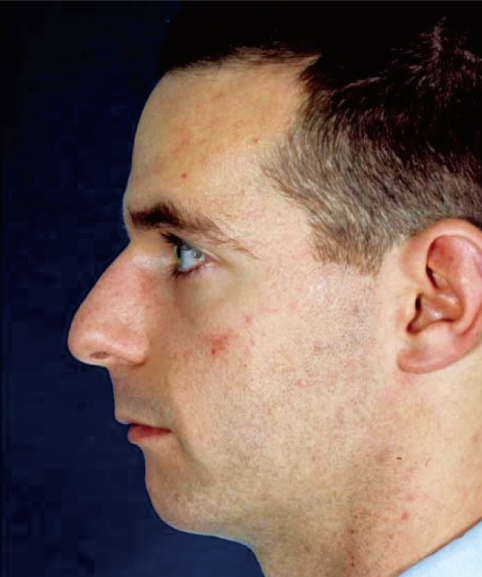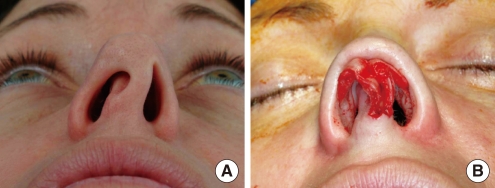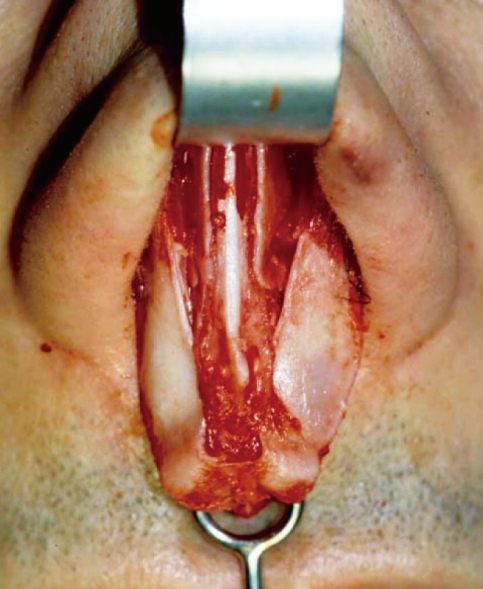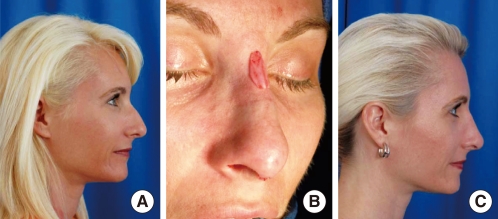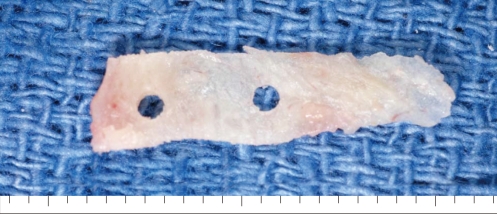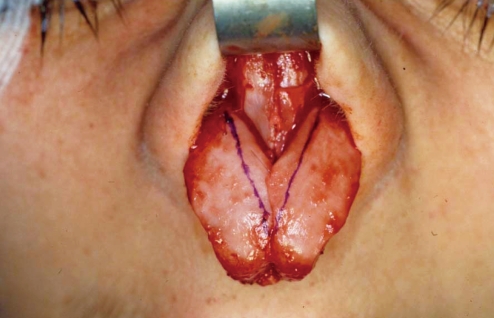Clin Exp Otorhinolaryngol.
2011 Jun;4(2):55-66.
Fundamental Principles in Aesthetic Rhinoplasty
- Affiliations
-
- 1Division of Facial Plastic & Reconstructive Surgery, Department of Otolaryngology-Head & Neck Surgery, University of Virginia, Charlottesville, VA, USA. ssp8a@virginia.edu
Abstract
- This review article will highlight several fundamental principles and advances in rhinoplasty. Nasal analysis has become more sophisticated and thorough in terms of breaking down the anomaly and identifying the anatomic etiology. Performing this analysis in a systematic manner each time helps refine these skills and is a prerequisite to sound surgical planning. Dorsal augmentation with alloplastic materials continue to be used but more conservatively and often mixed with autogenous grafts. Long term outcomes have also taught us much with regards to wound healing and soft tissue contracture. This is best demonstrated with a hump reduction where the progressive pinching at the middle vault creates both aesthetic and functional problems. Correcting the twisted nose is challenging and requires a more aggressive intervention than previously thought. Both cartilage and soft tissue appear to have a degree of memory that predispose to recurrent deviations. A complete structural breakdown and destabilization may be warranted before the nose is realigned. This must be followed by careful and meticulous restabilization. Tip refinement is a common request but no single maneuver can be universally applied; multiple techniques and grafts must be within the surgeon's armamentarium.
Keyword
Figure
Reference
-
1. Burres S. Tip points: defining the tip. Aesthetic Plast Surg. 1999; Mar-Apr. 23(2):113–118. PMID: 10227911.
Article2. Mowlavi A, Meldrum DG, Wilhelmi BJ. Implications for nasal recontouring: nasion position preferences as determined by a survey of white North Americans. Aesthetic Plast Surg. 2003; Nov-Dec. 27(6):438–445. PMID: 15029456.
Article3. Powell N, Humphreys B. Proportions of the aesthetic face. 1984. New York: Thieme-Stratton.4. Crumley RL, Lanser M. Quantitative analysis of nasal tip projection. Laryngoscope. 1988; 2. 98(2):202–208. PMID: 3339933.
Article5. Humphrey CD, Arkins JP, Dayan SH. Soft tissue fillers in the nose. Aesthet Surg J. 2009; Nov-Dec. 29(6):477–484. PMID: 19944992.
Article6. North JF. The use of preserved bovine cartilage in plastic surgery. Plast Reconstr Surg (1946). 1953; 4. 11(4):261–274. PMID: 13055472.
Article7. Pribitkin EA, Ezzat WH. Classification and treatment of the saddle nose deformity. Otolaryngol Clin North Am. 2009; 6. 42(3):437–461. PMID: 19486741.
Article
- Full Text Links
- Actions
-
Cited
- CITED
-
- Close
- Share
- Similar articles
-
- Functional Corrective Rhinoplasty of Deviated Nose
- Augmentation rhinoplasty using outer table calvarial bone graft
- The Problems and Solutions of Filler Augmentation Rhinoplasty
- Augmentation Rhinoplasty Using Dermofat Graft
- Aesthetic and functional corrections in case of foot plate deformities in rhinoplasty


